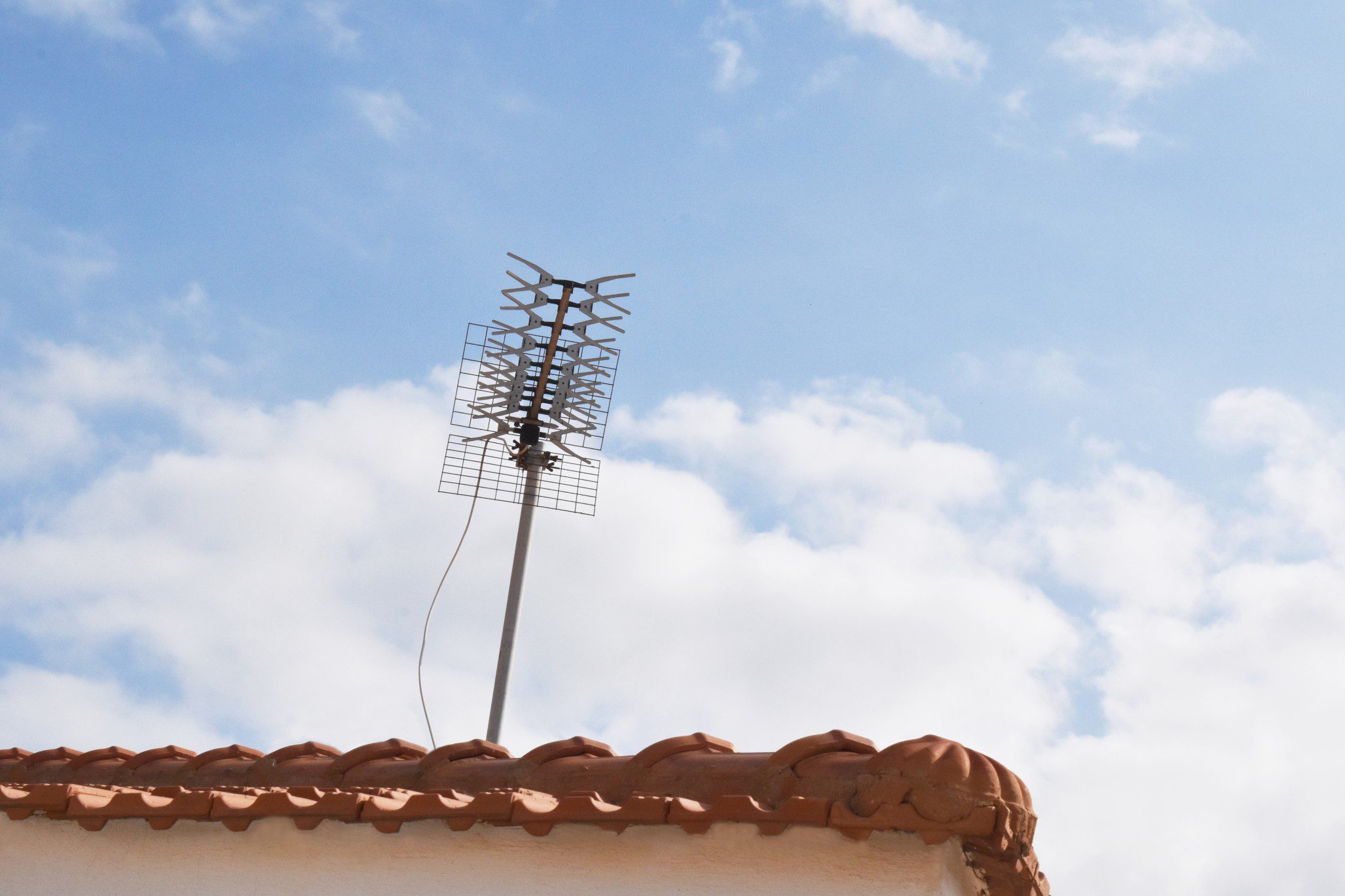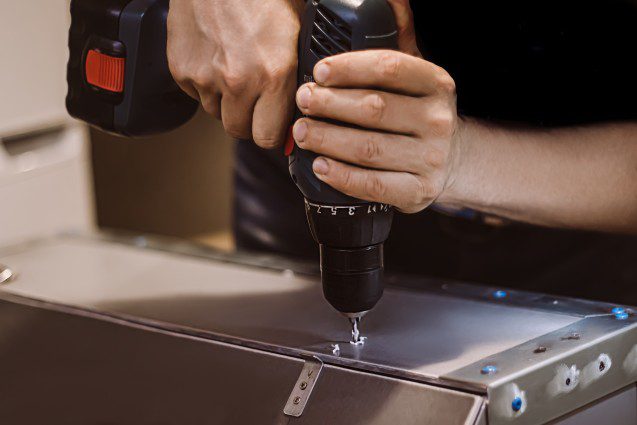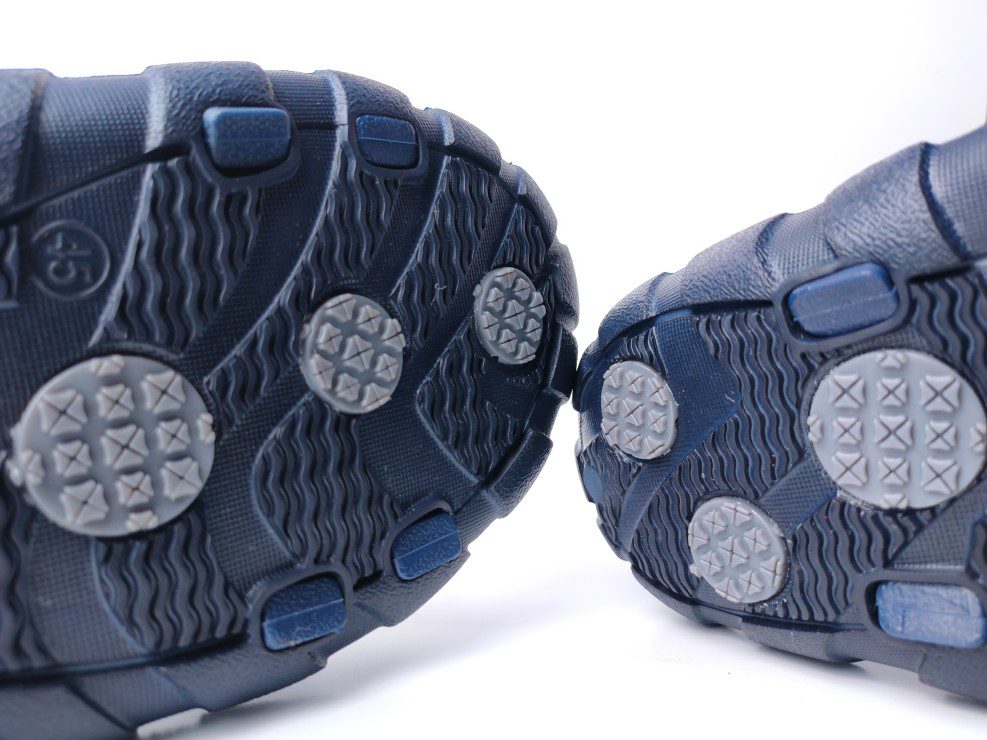
Setting up your antenna on your home’s roof is the best way to ensure that you get consistent, continuous transmissions. Installing your TV antenna on the roof rather than in the attic will ensure that you get a strong signal from the broadcast towers.
It’s the greatest way to maximize your cable subscription without any impediments from the line of sight.
On the other hand, many people have no idea how to mount a TV antenna on their roof. It may appear complicated to mount the antenna at such a high altitude, but thanks to this method, you’ll be able to attach your TV antenna in no time with the aid of your tripod or a few other items!
One of the most important things in enjoying your favorite program is getting a good signal. It allows you to watch crystal-clear HD films that look great on a big-screen HDTV. Using a tripod mount to secure your TV antenna is the safest installation method.
Using a tripod will allow you to place your antenna at a height free of obstructions or interferences.
Use the top of your house to find a position where no wires or cables obstruct the signal. There has to be a lot of room for the antenna to work well.
The compass direction in degrees may be found by locating your nearest broadcast tower. Make sure there aren’t any signal-interfering structures or trees in the way.
For centering the rafter, use an angle finder and chalk or a permanent marker to mark each place. The tripod’s legs will rest in these areas, so be careful to place it on the roof.
Over the rafters, extend each tripod leg to the three markings. If required, use a level to ensure that the tripod is straight.
Take your crescent wrench or pliers, tighten the clamp, and secure the antenna mast in place on the rafter.
Check your feet with the stud detector to make sure they’re straight. Keep the mast straight (vertically) in the rafter center by using your level.

Before screwing in the screws, apply pitch cushions to each foot. This ensures that there will be no additional leaks.
To mount the tripod to the rafters, use screws and a screwdriver. Start by drilling 12-inch holes through the foot of each leg, starting in the center. Check that the screws are driven into the rafters and not only the pads. Be sure to secure each screw before proceeding to the next step.
Attach the antenna to the mast using clamps and, if required, tighten it further using pliers. You may save a lot of wiring by mounting the antenna adjacent to any existing wires.
Locate the broadcast towers by pointing the antenna in the direction of the towers and using the clamps to secure it in position. Once you’ve connected the coaxial wire to the antenna on your TV, you’ll need to fine-tune it until you get a good signal.
Install new coaxial cables in the same place as the old ones if your house has been hardwired with coaxial cables by previous owners.
Supply:
Tools:

An outside antenna mounts from your local hardware shop may be used with this technique. You may also use this technique to set up high-quality omnidirectional TV antennas.
While it’s not as simple as using a tripod to attach the antenna, this is a more solid option for any standard antenna kit since it can be used both on the roof and outside.
Step 1: Install the Universal Antenna Mount
Take a pen and mark where the holes need to be drilled on the antenna mount’s baseplate using a permanent marker. Drill four 1/8-inch pilot holes in the designated areas.
Attach the antenna mount to the rafter using the lab bolts and a power drill. If you’re concerned about leaks, you may use pitch pads or foam seals.
Set a level on the mount and adjust the mounting brace at the base of the pole to secure it in place.
Step 2: Attach the Nest Assembly to the Mount
Tighten the provided nuts with a wrench to secure them by sliding the U-bolt nest down from the top of the mount into the center.
Step 3: Attach the Coaxial Cable
To connect to the antenna at the top, run the coaxial wire up the interior of the mast. To prevent water damage to the connection, use a drip loop on the cable’s top.
Use a coaxial wire to connect the antenna to the television. A power adapter may be required for your universal antenna mount if it has to be placed near a power outlet.
If you’re installing an antenna, it’s good to prepare ahead and learn a little about house building. My family had an attic-mounted TV antenna when I was a kid; I fondly remember it. It didn’t matter since we had rafters instead of trusses due to the age of the building.
Smaller pieces of timber are used in trusses, which are then re-assembled to enhance their overall strength and stability.
There are single pieces of wood that extend from the roof peak to the top of your walls to make a triangle. Rafters allow for attic antennas that may even need a rotator to be installed in the attic.
If you’re using a rooftop antenna, the first thing to check is that it’s properly grounded because you don’t want your TV tuners to explode or catch on fire.
The grounding wire should be used properly. A surge protector for networking with a Network Cable connection is good after the antenna cable is inside your house.
You’ll need a chimney mounting kit with a few steel straps that wrap around the chimney and provide a sturdy mounting position for your camera. Directly mounting an antenna or a pole requires avoiding drilling into the chimney.
If you’re using a stand to attach directly to your roof, you’ll want to use a rubberized membrane with a layer of tar to melt into the shingles and close up your bolt holes. This will help prevent damage to your roof from friction.
Lag bolts should be installed into the rafters, not the plywood, to ensure that they are secure. Bracing in the attic will be necessary if you need to screw into a rafter that isn’t below it. A plywood roof cannot support an antenna.
Caulking should be done using outdoor-rated acrylic silicon or plain silicone, and roofing cement may be used for under-flashing, shingle(link) repair, etc.

The roof is a dangerous place to be at any time.
Even if the shingles seem to be in excellent condition, you should proceed with caution on any roof you have never been on before since roof sheathing rot might lead you to fall through the roof.
If you find yourself slipping, flatten yourself down with your stomach on the roof and your arms and legs spread out like you’re forming a snow angel face down.
You won’t slide as long as there’s friction on your shoes. When anything is ready to fall from the roof, please don’t attempt to rescue it. Instead, let it fall. Slipping or being pulled down by it is not worth it. Just because it’s your latest and greatest smartphone doesn’t mean you should hold on too tightly.
Rooders use rubber-soled shoes for safety reasons. You must wear soft shoes with excellent stick and grip at the absolute least.
Professional climbers rely on safety ropes like trees and mountain climbers, which you are unlikely to have on hand. However, you may rent them from a reputable local supply store if necessary.
Ensure you get an anchoring system for your roof and a safety harness and roof mount kit since you’ll have to screw them into your roof and then fix them later on.
In many cases I don't recommend my clients to install their own TV antenna's on their roof. The first thing I would do is call your cable company because they sometimes will mount the TV antenna for free. I had a customer fall while installing their antenna (not off the roof). Before they fell they grabbed the antenna and it damaged their shingle surface and casued a leak (on a new roof that I had just installed! This voided the roof's warranty since the customer caused the damage but I fixed the leak anyways. Be careful and think of the implications a mishap can cause from self installing your TV Antenna!
Brendan Anderson | Roofer in Whitefish Montanna.
As long as your “view” doesn’t consist of the brick wall of a neighboring building, you should put the antenna near a window if feasible. An exterior wall facing the broadcast towers is the runner-up option.
Metal roofs make installing a new antenna in the attic very complex and unlikely to succeed. Using a higher gain antenna is often the first step in mitigating signal loss since any roofing material will reduce the signal.
Inside the roof area used for the antenna. The general rule of thumb is that an in-roof antenna installation is feasible in any suburb with a strong signal (70dbuv or above) and on a tile roof without sparking or insulation.
Make use of a window for the antenna's installation, Your antenna's reception will be improved if fewer obstacles exist between it and the broadcasting towers. Thick, impenetrable walls and ceilings block, no doubt about it. Because of this, putting your antenna near a window is frequently the ideal place to place it.
Attic antennas are shielded from the weather, making them after to install and more durable. The attic area that would otherwise be unused is also used. There are several ways to attach an antenna. If you have an attic, you may put them on the floor or mount them to the ceiling or the wall.